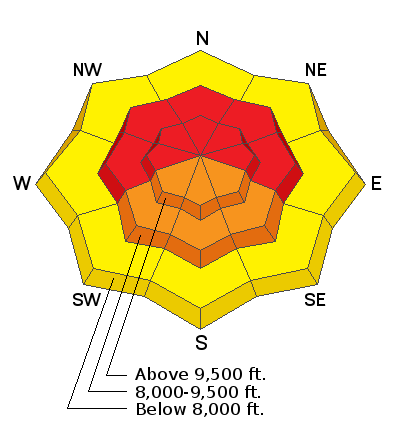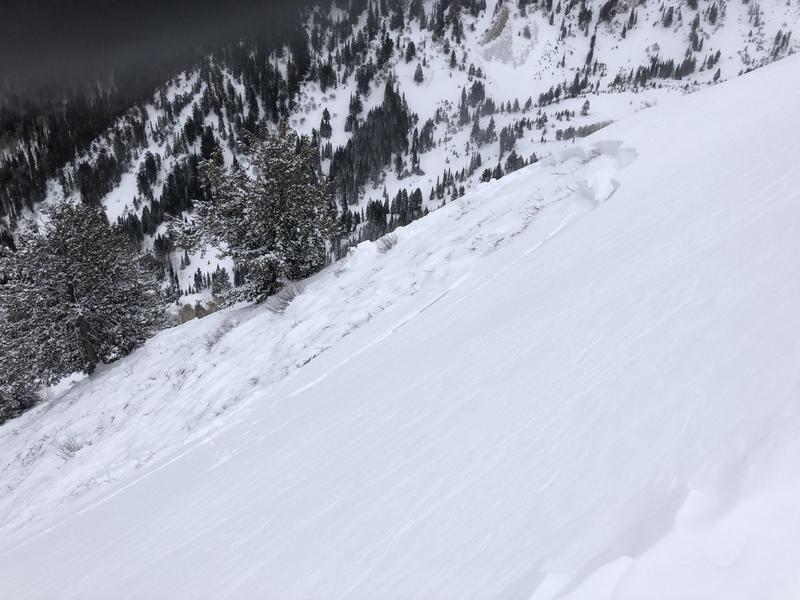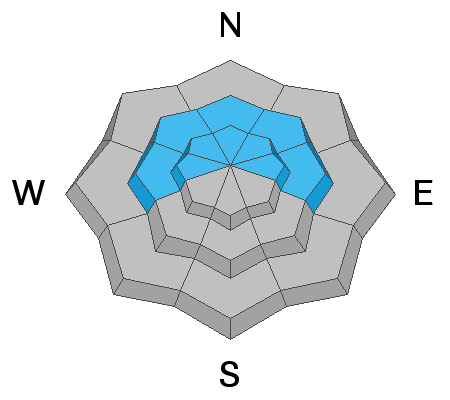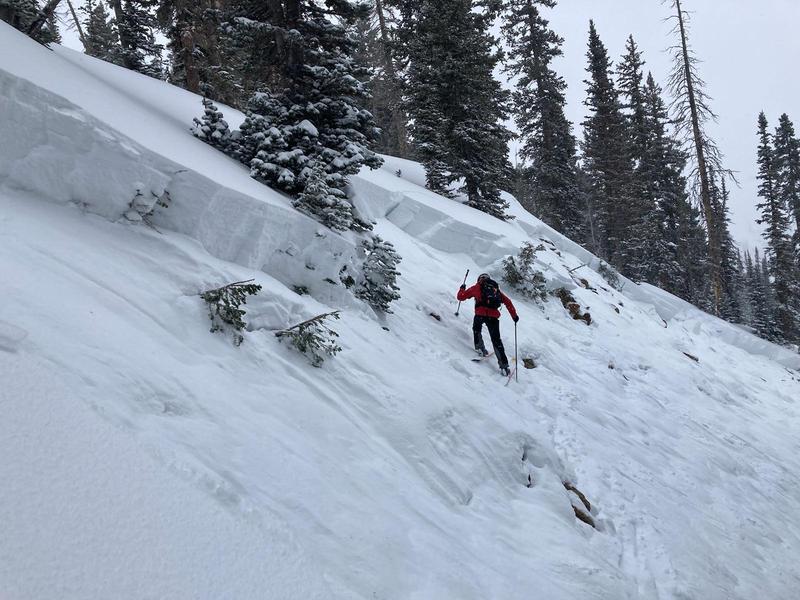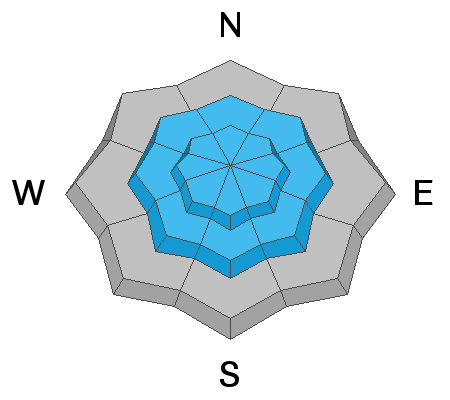Under cloudy skies, the overnight temperatures have plummeted, and it's cold with current mountain temperatures in the single digits °F. Winds are blowing from the west-southwest at speeds of 10-20 mph across the upper elevation ridgelines. My hope is they are finally trending down in speeds. It's been a long six days of strong winds. The last snowflakes are currently being squeezed from the atmosphere leaving us with 6-10 inches of new snow containing 0.47-0.58 inches of water in the past 24 hrs.
Many people have asked me what happened to our epic storm? Where is all the snow? Well, Jim Steenburgh covered this question in his blog
HERE. This morning, I decided to add up the water amounts for the past five days. Talking to the Alta Avalanche Office, they manually measured at Alta Collins 9,600', 4.14 inches of water for the past five days. In the Uintas, the Trial Lake weather station reads 5.4 inches of water. If you take the normal Utah snow ratio of 12:1, it snowed 50 inches at Alta and 65 inches at Trail Lake. Other parts of the state also ended up with inches of water and feet of snow. Despite the annoying south winds, the water and snow totals are impressive.
AND we still have more snow on the way, with yet another storm starting Wednesday evening lasting into Friday with another 10-20 inches of new snow possible.
In the backcountry, two avalanches caught my attention. The first is
Scotties Bowl in upper Little Cottonwood, Scotties is a north-facing slope at 9,800' in elevation, and the avalanche was 100 feet wide and 4 feet deep. The second avalanche was in
Alexander Basin and was remotely triggered from 250 feet away. The avalanche was roughly 2 feet deep, 80 feet wide, and ran 1,500 feet to the valley bottom (pic below).

